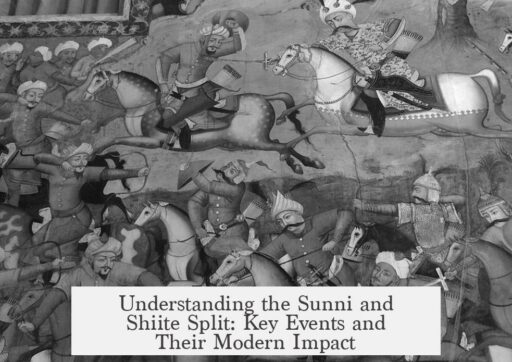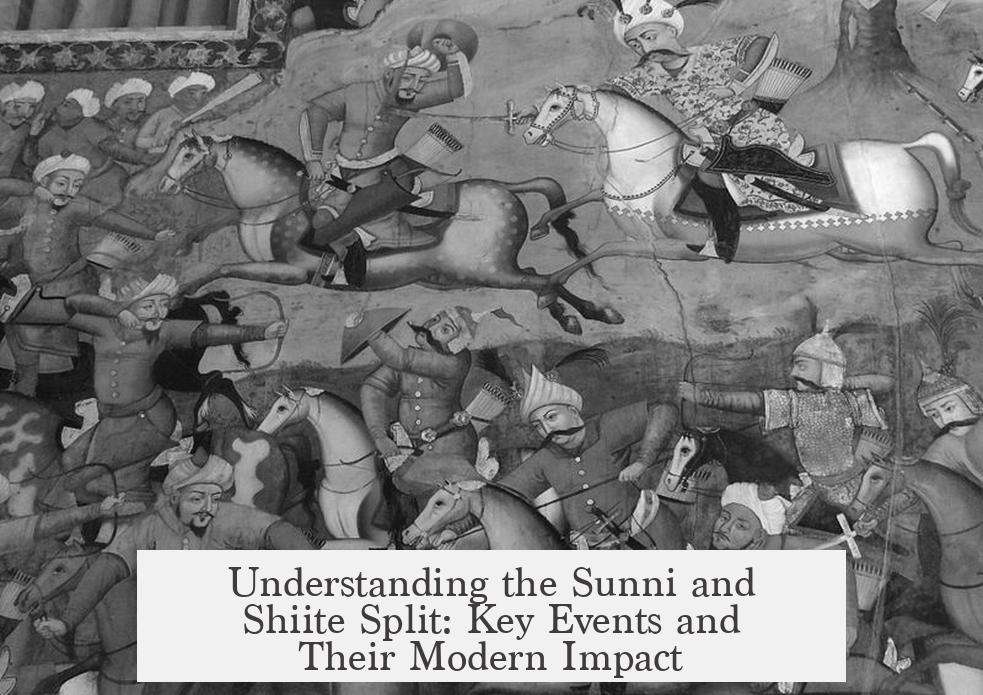The Sunni/Shiite split originated from a dispute over who should lead the Muslim community after the death of Prophet Muhammad. Sunnis believe Abu Bakr, Muhammad’s close companion, was the rightful successor. Shias hold that Ali, Muhammad’s cousin and son-in-law, was appointed by Muhammad himself to lead. This fundamental disagreement over succession shaped two distinct branches of Islam.
Both Sunni and Shia Muslims agree on the core teachings of Islam as revealed during Prophet Muhammad’s life. The split begins over Muhammad’s successor. Neither group disputes Muhammad’s authority or message, but they differ on who was designated to lead the Muslim community after him.
The Sunni argument for Abu Bakr’s succession relies on events during Muhammad’s final illness. Aisha, Muhammad’s wife and Abu Bakr’s daughter, reported that Muhammad asked her to call Abu Bakr and Umar to write a letter granting leadership to Abu Bakr. Another point is that Muhammad instructed Abu Bakr to lead a prayer when Muhammad fell ill, implying Abu Bakr’s future leadership role.
The Shia counter this with the event of Ghadir Khum. Muhammad asked the crowd if he had more authority over believers than they had over themselves. The crowd agreed, and Muhammad declared, “Whoever takes me as their mawla, take Ali as their mawla.” Shias interpret “mawla” as master or leader, while Sunnis translate it as friend or ally. This event is central for Shias to claim Ali’s appointment by Muhammad.
Immediately after Muhammad’s death, a crucial meeting at Saqifah shaped Sunni leadership. The Ansar of Medina gathered to decide who should lead. Abu Bakr, Umar, and other Muhajirun joined and secured Abu Bakr’s support, excluding Ali and his followers. Ali was preparing Muhammad’s body for burial and did not attend.
This exclusion caused tension. Ali’s supporters, including his wife Fatima (Muhammad’s daughter), gathered to protest Abu Bakr’s claim. Reports describe Umar going to Ali’s house with armed men to demand allegiance. Narratives vary on the level of confrontation, with some mentioning violence against Fatima. Ali reportedly withheld allegiance for six months, only confirming it after Fatima’s death and refusing to swear allegiance in Umar’s presence.
| Event | Sunni Perspective | Shia Perspective |
|---|---|---|
| Successor to Muhammad | Abu Bakr, supported by Aisha and others | Ali, appointed by Muhammad at Ghadir Khum |
| Saqifah Meeting | Legitimate selection of Abu Bakr | Ali excluded, seen as unjust |
| Allegiance to Abu Bakr | Ali swore allegiance promptly | Ali delayed allegiance, conflict with Umar |
After Abu Bakr, Umar became Caliph. Upon Umar’s death after an assassination, he appointed a council to select his successor. The council members included Ali and figures like Uthman. The council chose Uthman, with Ali reluctantly agreeing. Uthman’s reign favored his Umayyad tribe and faced rebellion.
Uthman’s murder triggered further division. Ali, who attempted to protect Uthman, became Caliph next. However, controversy followed. Aisha, Talha, and Zubayr opposed Ali, accusing him of involvement in Uthman’s murder. This led to the Battle of the Camel, where Ali’s forces fought those led by the rebel trio.
The battle took place near Basra. Rebel leaders Talha and Zubayr were killed, and Aisha was captured and sent back to Medina with respect. The conflict marked a deepening rift. Ali’s political authority was challenged repeatedly, including by Muawiya, Uthman’s Umayyad cousin, who declared himself Caliph in Syria. These events widened the Sunni-Shia divide politically and theologically.
The Sunni tradition accepts the legitimacy of the first three Caliphs—Abu Bakr, Umar, and Uthman—before Ali’s reign. The Shia reject the first three Caliphs’ authority, considering Ali as the only rightful successor. This difference affects Islamic law, doctrine, and religious practices. Both groups use distinct narrators for hadith (sayings and actions of Muhammad), shaping unique religious interpretations.
- Sunni Muslims recognize Abu Bakr as Muhammad’s successor based on early community consensus and specific events.
- Shia Muslims base Ali’s leadership claim on Muhammad’s declaration at Ghadir Khum and familial ties.
- The Saqifah meeting excluded Ali, causing initial division and later conflict.
- Subsequent Caliphates of Umar, Uthman, and Ali introduced further tensions, especially after Uthman’s assassination.
- The Battle of the Camel was a significant early conflict between Ali and his opponents, deepening the split.
- Sunni acceptance of the first three Caliphs contrasts with Shia rejection, influencing doctrine and practice today.
Can Someone Explain the Sunni/Shiite Split to Me?
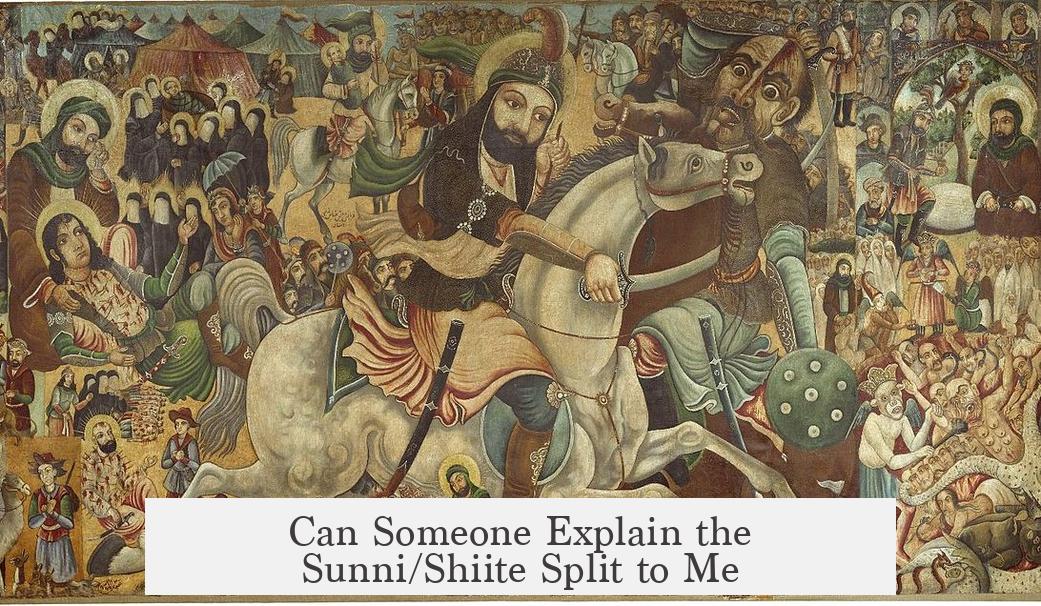
The Sunni/Shiite split boils down to a disagreement over who should have succeeded the Prophet Muhammad after his death and how that leadership should be recognized and exercised. From this core question, a complex, centuries-old divide has shaped distinct religious, political, and cultural paths for Muslims worldwide.
Want a story that clears the fog? Let’s unpack this historical drama from the very start.
The Common Starting Point: Life of Muhammad
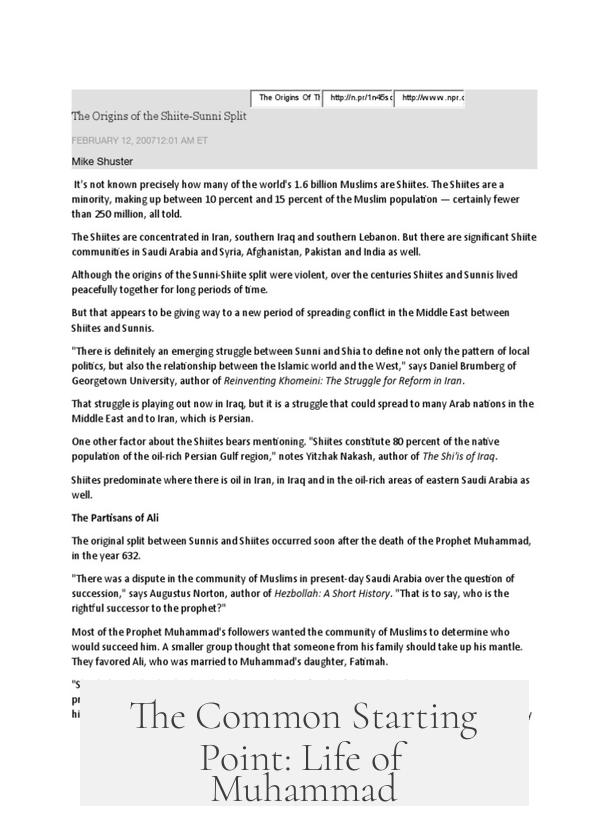
Both Sunni and Shiite Muslims agree on one thing—they respect Prophet Muhammad as the final messenger of Islam. The core of their faith and theology is rooted in his teachings and practices. The split, however, begins the moment Muhammad dies. Neither Sunni nor Shiite groups can claim direct, ironclad proof about Muhammad’s clear, uncontested instructions about who should succeed him.
This is the root of the schism: who rightly inherits Muhammad’s spiritual and political mantle?
The Great Succession Dispute
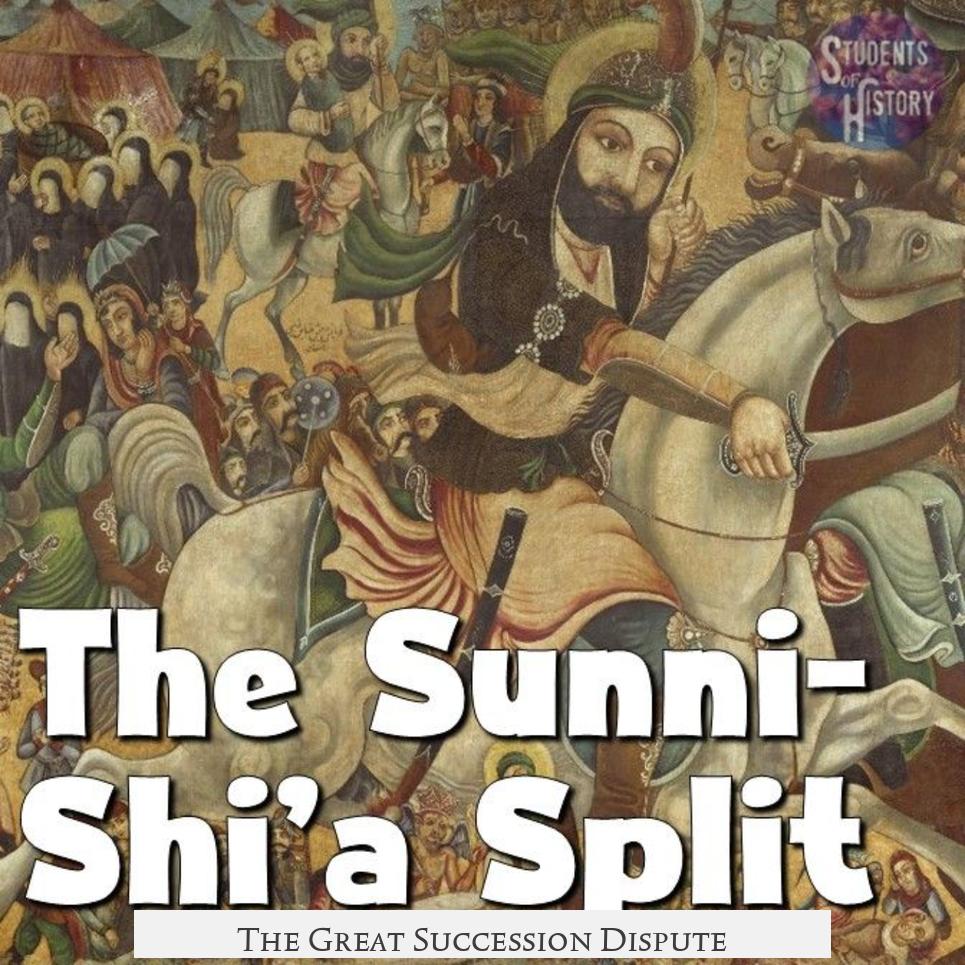
The Sunnis argue that Muhammad intended Abu Bakr, his close companion and friend, to lead after his death. This view leans heavily on reports from Aisha—Muhammad’s wife and Abu Bakr’s daughter. She claimed Muhammad once said, during illness, to call Abu Bakr urgently, fearing rival claims: “God and the faithful refuse anyone but Abu Bakr.” Sunni tradition also notes Muhammad’s choice in allowing Abu Bakr to lead prayers—hinting Abu Bakr was meant to lead the community, too.
The Shiites, meanwhile, point to a different key moment—an event called Ghadir Khum. Here, Muhammad reportedly asked the crowd, “Do I not have authority over the believers more than they have over themselves?” They replied yes. Then Muhammad supposedly declared, “Whoever takes me as their mawla, take Ali as their mawla.”
What’s this “mawla”? Sunnis say it means “friend.” Shiites insist it means “master” or “leader.” That tiny word holds the weight of centuries-old debate.
After Muhammad’s Death: The First Power Moves

When Muhammad died, a significant meeting occurred at Saqifah. A group of Medina’s early Muslims met urgently to decide the community’s next leader. Abu Bakr and Umar, a powerful ally, arrived and quickly secured support for Abu Bakr as the first Caliph. Interestingly, Ali—the man Shiites championed—was busy with Muhammad’s burial. Not exactly the best timing for shaping his claim.
This sparked tension. Shiite supporters gathered at Ali’s and Fatima’s (Muhammad’s daughter and Ali’s wife) house. Accounts vary wildly. Some narrations say Umar threatened to burn the house down if Ali didn’t pledge allegiance to Abu Bakr. Things got ugly; Fatima reportedly suffered injury that caused a miscarriage. These violent scenes reveal how raw and personal this split was. Ali delayed his allegiance to Abu Bakr for about six months and refused to pledge it in front of Umar.
What Happened After Abu Bakr?
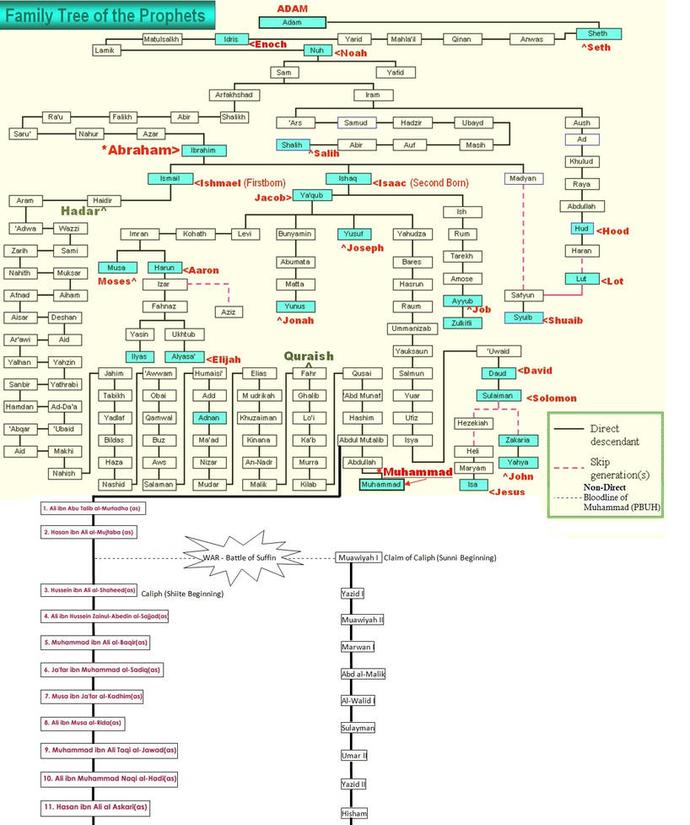
Next came Umar’s reign. He was assassinated by Abu Lulu and, before passing, set up a council to pick his own successor. Five prominent men, including Ali and Uthman, were on that council. They selected Uthman. Ali protested but reluctantly accepted. That kind of reluctant nod often signals bigger things to come.
Uthman’s leadership, however, created new problems. Favoring his Umayyad family, he alienated many. Rebels rose, besieged Uthman’s home, and eventually killed him. Ali tried to protect Uthman but survived—sparking suspicion among some that Ali might have held back.
Ali’s Caliphate and The Battle of the Camel
Ali then became Caliph. But his reign was rocky. Fighters wanted justice for Uthman’s death. Key figures like Talha and Aisha vehemently opposed Ali, leading a rebellion. Aisha was so involved she rode into battle on a camel. Talk about a lady taking charge!
This clash at Basra came to be known as the Battle of the Camel. With rebels around 3,500 strong, the city divided between support and skepticism. The rebels broke an agreement by imprisoning the local governor during prayer—a big no-no in Islamic tradition.
Ali tried peacemaking by holding a Qur’an between battle lines—a poetic gesture but ineffective. The battle ended with the deaths of Talha and Zubayr on the rebel side. Ali spared Aisha’s life, showing some mercy despite her opposition.
Sunni vs Shiite: Looking Beyond the Battle
The split isn’t just about history; it’s about legitimacy, authority, and interpretation. Sunnis accept the first three Caliphs—Abu Bakr, Umar, and Uthman—before Ali, seeing their leadership as rightly guided. Shiites reject the legitimacy of these early Caliphs, believing Ali was the rightful successor from the start.
This disagreement colors everything from religious practices to political views. Each side trusts different narrators to transmit Muhammad’s teachings and interprets traditions differently. That’s why Shiite and Sunni practices sometimes look distinct, without contradicting the shared core beliefs of Islam.
Why Does It Matter Today?
Understanding this split matters because it shapes geopolitics, religious identity, and even social cohesion in many Muslim-majority regions. Conflicts between Sunni and Shiite groups have flared up in places like Iraq, Syria, and Lebanon, rooted partly in this ancient rift.
But here’s a key question: Could Muhammad have anticipated this split? Or was it an unintended fallout from the intense pressures of leadership after his death? What do you think?
Practical Takeaways from This Historical Divide
- Leadership matters immensely: Islam emphasizes the unity of the ummah (community), yet leadership selection can divide.
- Interpretation varies: Different readings of the same event or word (“mawla”) can lead to completely different outcomes.
- Historical narratives impact modern identity: Who you trace legitimacy to shapes your worldview and community belonging.
- Religion and politics intertwine: The split shows religion isn’t only about faith but also about power and governance.
Understanding history and context is crucial to grasp current events and appreciate the diversity within Islam. More than a feud, it’s a complex story of faith, authority, and human nature.
In Conclusion
The Sunni/Shiite split isn’t just a theological squabble but a story about succession, loyalty, and leadership after Muhammad. Sunnis accept the first three Caliphs; Shiites hold Ali as the rightful heir. This divide influenced different religious practices and ideas on government. Both sides honor Muhammad, but they differ on who should lead after him.
Next time you hear about Sunni and Shiite Muslims, remember—this split is layered, personal, political, and ancient. It’s about much more than simple disagreements; it’s about how a community handles leadership when its prophet passes away.
Got any thoughts or questions about this story? Feel free to dive in. History loves a good conversation.
What was the main disagreement that caused the Sunni/Shiite split?
The split began over who should succeed Muhammad as leader. Sunnis support Abu Bakr based on his early leadership and prayer role. Shia argue Ali was appointed by Muhammad at Ghadir Khum as the rightful leader.
Why do Shia interpret “mawla” differently than Sunnis?
Shia view “mawla” to mean leader or master, signaling Ali’s authority after Muhammad. Sunnis see it as meaning friend or ally, which justifies Abu Bakr’s succession without a direct leadership claim.
What was the Saqifah meeting and why is it important?
After Muhammad’s death, some Ansar and Muhajirun met at Saqifah to decide succession. Abu Bakr was selected there, without Ali’s presence. This event deepened the division, as Ali’s supporters felt excluded.
How did Ali initially respond to Abu Bakr’s caliphate?
Ali delayed giving allegiance to Abu Bakr, possibly for six months. Some reports mention tensions and even violence involving Umar and Fatima, Ali’s wife, which worsened relations between the factions.
What caused the Battle of the Camel during Ali’s caliphate?
After Uthman’s murder, Ali became caliph but faced rebellion led by Aisha, Talha, and Zubayr. They accused Ali of not properly punishing Uthman’s killers, leading to armed conflict with thousands involved.
Why did some question Ali’s loyalty during Uthman’s assassination?
Though Ali and his sons tried to protect Uthman, his killers succeeded. Because they survived, some Quarayshis doubted how genuine Ali’s efforts were, deepening mistrust between factions.
